Meeting Safe Transfer Of Unstable Loads In Coastal Factories Requirements in Greece with Automated Pallet Exchange
Are you struggling with the constant risk of handling unstable loads in your facility? In coastal areas, this problem gets even worse. The humid, salty air attacks your wooden pallets, weakening them day by day. You see them start to splinter and warp. This creates a ticking time bomb in your warehouse. A single pallet failure could mean thousands of dollars in damaged goods, or even worse, a serious injury to one of your team members. The constant worry about safety, product loss, and operational delays is a heavy burden for any manager or owner to carry. But there is a reliable way to solve this. You can implement automated systems designed specifically to handle these challenges, creating a safer and more efficient workflow.
Automated pallet exchange systems are the definitive solution for safely transferring unstable loads, especially in the demanding conditions of coastal factories like those in Greece. These machines work by securely clamping the entire product load from the sides and top before initiating a transfer. This creates a stable, solid block that is protected from shifting or collapsing. The system then smoothly inverts the load or pushes it onto a new, sturdy pallet—such as a plastic or galvanized steel one that isn't affected by humidity. This process eliminates the risks associated with manual handling and weak, moisture-damaged wooden pallets, directly meeting the stringent safety and operational requirements of modern industry.
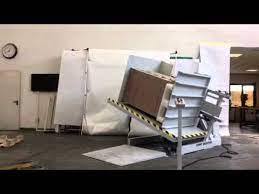
I've seen these challenges firsthand throughout my career. From my early days as an engineer on the factory floor to running my own company, the problem of product handling has always been a core focus. A factory in Greece recently reminded me of how critical this is. They are located right by the sea and were dealing with unstable loads of bagged goods. Their story is not unique to Greece; it's a story I hear from clients all over the world, from Mexico to Southeast Asia. The principles we used to help them can be applied to any operation that needs to move products safely and efficiently. Let's explore how we can break down this problem.
How Does Automation Address the Unique Challenges of Coastal Environments?
Does the salty sea air feel like it's actively working against your equipment and your wooden pallets? You invest in materials, and within months, you see the first signs of rust on machinery and rot in your pallets. It's a frustrating, expensive cycle. This constant degradation not only leads to unexpected equipment failures and downtime but also compromises the very foundation your products sit on. When a pallet fails under load because it has absorbed too much moisture, the consequences are immediate and severe. The solution lies in shifting your strategy from constantly replacing materials to investing in technology that withstands these harsh conditions from the start.
Automation addresses the unique challenges of coastal environments by using superior materials and intelligent design to combat corrosion and humidity. Pallet exchange systems can be built with corrosion-resistant materials like stainless steel, ensuring a long operational life despite the salty air. Furthermore, these automated systems allow you to seamlessly switch from standard, vulnerable wooden pallets to robust alternatives like plastic or galvanized steel. This eliminates the root cause of pallet failure due to moisture absorption, protecting both your product and your team while streamlining your entire logistics process.
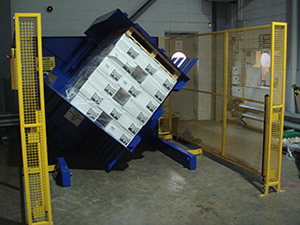
The Fight Against Corrosion and Moisture
In my experience, factories in coastal regions face a battle on two fronts: the air and the water. The high salt content in the air accelerates the oxidation of standard carbon steel, leading to rust. This rust doesn't just look bad; it weakens structural components and can contaminate products. At the same time, high humidity means that porous materials, especially wood, act like sponges. A "dry" wooden pallet can absorb a significant amount of water from the air, increasing its weight and, more dangerously, decreasing its structural integrity.
When we designed the solution for the Greek factory, material choice was our first priority. We knew a standard machine wouldn't last.
Machine Durability: A Non-Negotiable Requirement
We proposed a pallet inverter constructed primarily from 304-grade stainless steel. While the initial investment is higher than for a standard machine, the long-term value is undeniable. A stainless steel frame resists corrosion from salt spray and humidity, drastically reducing maintenance needs and extending the machine's lifespan. This aligns with a core principle I learned when building my own factory: it is often cheaper to invest in the right equipment once than to pay for repairs, downtime, and replacements for years. For a business leader like you, Javier, who analyzes every investment for its return, thinking in terms of total cost of ownership (TCO) instead of just the initial purchase price is crucial. A machine that runs reliably for 15 years with minimal maintenance in a harsh environment provides a far better ROI than a cheaper one that needs major work after five.
Pallet Choice: The Foundation of Your Load
The second part of the solution was to address the pallets themselves. The automated pallet exchanger empowers a factory to implement a two-pallet system. They can receive goods on cheap, one-way wooden pallets but store and move products internally on durable, clean, and moisture-resistant plastic or galvanized steel pallets.
Here is a simple breakdown of pallet types for coastal environments:
| Pallet Type | Durability in Humid/Salty Air | Hygiene & Cleanliness | Upfront Cost | Long-Term Value |
|---|---|---|---|---|
| Wooden Pallets | Poor. Prone to rot, mold, and warping. | Poor. Porous surface harbors bacteria. | Low | Poor |
| Plastic Pallets | Excellent. Impervious to moisture. | Excellent. Easy to wash and sanitize. | Medium | Excellent |
| Galvanized Steel | Very Good. Coated to resist rust. | Good. Can be cleaned effectively. | High | Very Good |
By using a pallet exchanger, the factory could stop the cycle of throwing away damaged wooden pallets. They reduced waste, which helped with their environmental compliance goals. They also ensured that every load moving through their facility was on a reliable, standardized pallet, which dramatically improved the stability and safety of their entire operation. This is not just a Greek solution; it is a universal strategy for any coastal operation.
What Makes a Load 'Unstable' and How Can a Pallet Exchanger Secure It During Transfer?
Have you ever watched a forklift operator gingerly lift a tall, wobbly stack of boxes and held your breath? That feeling of uncertainty is a clear sign of an unstable load. These loads can be anything from bags of powder that shift and settle to unevenly stacked containers or flexible products. The problem is that gravity and momentum are always working against you. A sharp turn, a sudden stop, or a slight incline can be enough to send the entire load tumbling. This not only results in lost product and messy cleanups but also poses a significant risk to your employees. The solution is not to train people to be more careful; the solution is to take human error out of the equation with a machine that is built to control the load.
A pallet exchanger secures an unstable load by fundamentally changing how it's handled. Instead of being precariously balanced, the load is mechanically contained. The machine uses powerful, yet gentle, clamping walls that press in from the sides, and often a top press that applies pressure from above. This transforms a loose collection of items into a single, solid block. Once the load is secured in this way, the machine can rotate it 180 degrees to swap the pallet from above or push the entire block horizontally onto a new pallet. Throughout this entire process, the products themselves barely move relative to each other, ensuring a safe and complete transfer every time.
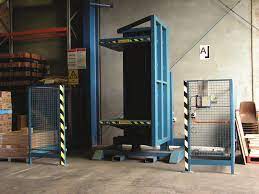
Defining and Controlling Instability
From my engineering perspective, an "unstable load" is any load where the center of gravity can easily shift outside its base of support. This can happen for several reasons, and understanding them is key to choosing the right solution.
Common Types of Unstable Loads
In heavy industries, including steel manufacturing, instability comes in many forms. It’s not just about boxes.
- Bagged Goods: Sacks of cement, chemicals, grains, or powders are notoriously unstable. The contents can shift, causing the bags to bulge and lean.
- Stacked Sheets or Plates: Thin sheets of metal or other materials, if not perfectly aligned and strapped, can slide against each other.
- Drums or Barrels: While stable on their own, when palletized in a honeycomb pattern, the load can be prone to shifting, especially if the drums are not uniform.
- Irregularly Shaped Items: Castings, machine parts, or coiled wire placed on a pallet can have an uneven weight distribution, making them inherently unstable.
For each of these, manual handling with a forklift is a gamble. But a pallet exchanger is designed for this. Modern systems use sensors to detect the height of the load and apply just enough clamping pressure to secure it without causing damage. This is critical when handling both heavy-duty products and more sensitive materials.
The Mechanics of a Safe Transfer
Let's walk through the process so you can visualize how the risk is neutralized. I always believe in understanding the mechanics, as it builds confidence in the technology.
- Loading: The forklift places the palletized, unstable load into the machine's chamber. The operator is now clear of the area.
- Securing the Load: The automated sequence begins. The side clamping walls move inwards, pressing gently against the sides of the product stack. The top press lowers to meet the top of the load. At this point, the load is held securely on all four or five sides. It cannot shift, slide, or fall.
- The Exchange:
- Inverter-Style: The entire chamber, including the clamped load and both old and new pallets, rotates 180 degrees. Gravity now rests the load on the new pallet.
- Pusher-Style: The old pallet is removed from below, while the load is held in place. A pusher plate then smoothly slides the entire product stack from the holding platform onto the new pallet waiting beside it.
- Releasing the Load: The clamping walls and top press retract.
- Unloading: The forklift safely removes the newly palletized, stable load.
The entire cycle is often completed in under 60 seconds. It transforms a high-risk, variable manual task into a low-risk, repeatable, and efficient automated process. This is the kind of predictable stability that leaders like Javier seek to implement across their operations. It's a cornerstone of building a modern, efficient factory.
How Can Integrating an Automated Pallet Exchanger Boost Overall Factory ROI?
You are constantly evaluating where to invest capital for the best return. Is a new machine a necessary expense or a strategic investment that will actively make you money? It's easy to look at the price tag of new equipment and hesitate. The pressure to keep costs down is immense. However, I have seen many companies fall into the trap of calculating the cost of a machine but failing to calculate the massive, ongoing costs of not having that machine. These hidden costs—inefficient labor, damaged products, workplace accidents, and production bottlenecks—can bleed a company's profits year after year. A strategic investment in automation, like a pallet exchanger, doesn't just add to your expenses; it directly attacks these hidden costs and delivers a strong, measurable return on investment (ROI).
An automated pallet exchanger boosts a factory's ROI through a multi-faceted approach. First, it drastically reduces the need for manual labor for tasks like re-stacking, freeing up employees for higher-value jobs and cutting direct wage costs. Second, it minimizes product damage during handling, which translates directly to the bottom line. Third, it increases operational throughput, allowing you to process more goods in less time. Fourth, by creating a safer work environment, it lowers the financial risks associated with accidents, such as insurance premiums and compensation claims. Finally, it enables smarter pallet management, such as using cheaper inbound pallets and higher-quality internal pallets, creating significant savings in logistics.
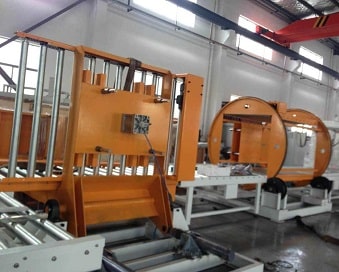
A Practical Look at the Numbers
As an engineer and a factory owner, I am a firm believer in data. Let's move beyond concepts and look at a practical, though simplified, ROI analysis. A CEO like Javier needs to see a clear path from investment to profit.
Imagine a facility that manually re-stacks 50 pallets per day.
| Cost/Benefit Area | Manual Process (Annual Cost) | Automated Process (Annual Impact) |
|---|---|---|
| Labor Costs | 2 workers x 8 hrs/day x $20/hr x 250 days = $80,000 | 0.5 worker (supervision) = $20,000 (Savings: $60,000) |
| Product Damage | 1% of goods damaged. (50 pallets x $1000/pallet x 250 days x 1% = $125,000) | Damage reduced to 0.1% = $12,500 (Savings: $112,500) |
| Workplace Safety | Higher risk of back injuries/accidents. (Avg. cost per claim: $40,000) | Risk dramatically reduced. (Potential Savings: $40,000+) |
| Throughput | 5-10 minutes/pallet manually. | ~1 minute/pallet automated. (Gain: 400%+ efficiency) |
| Total Annual Savings | - | ~$172,500 + Safety + Efficiency |
Assuming the automated pallet exchanger costs $100,000, the direct payback period in this scenario is less than a year. This is the kind of hard data that supports an investment decision. It directly addresses the goal of reducing overall operational costs.
The Strategic Value Beyond Direct ROI
The financial calculation is compelling, but for a forward-thinking leader, the strategic benefits are just as important. This is where a supplier becomes a partner, helping you see how one piece of equipment fits into your larger vision.
Paving the Way for Digitalization
Javier's goal of deploying MES and IoT platforms is exactly the right direction for a modern steel plant. An automated pallet exchanger is a perfect node in this digital ecosystem.
- MES Integration: The machine can communicate directly with your Manufacturing Execution System. It can receive orders for pallet swaps, report cycle times, count processed pallets, and log any errors. This provides real-time, accurate data for your production dashboards.
- Predictive Maintenance: We can equip these machines with IoT sensors to monitor hydraulic pressure, motor temperature, and cycle counts. This data feeds into a predictive maintenance platform, alerting your team to service needs before a breakdown occurs. This is how you achieve 95% equipment uptime.
Enhancing Flexibility and Compliance
The market is always changing. A customer might suddenly require products to be shipped on plastic pallets for their cleanroom facility. Another might demand heat-treated pallets for international export. Manually re-stacking for these orders is slow and expensive. With a pallet exchanger, it's a simple, fast process. This agility is a significant competitive advantage.
Furthermore, by enabling a switch from disposable wood pallets to reusable plastic ones for internal loops, you reduce waste. This is not just good for the environment; it is a tangible action that supports your company's sustainability reporting and helps meet increasingly strict environmental regulations. This directly addresses the pressure Javier faces.
My Insight: Why a Machine is More Than Just Steel and Wires
When I was first starting my own packing machine factory, I remember the immense pressure of every decision. Every dollar spent on equipment had to be justified. I wasn't just buying a machine; I was betting on a piece of my factory's future. I faced the same challenges many of you face today: fluctuating costs, the demand for higher efficiency, and the constant need to innovate to stay ahead.
This is why I look at the situation in the Greek coastal factory and I don't just see a technical problem. I see a business problem. The unstable loads and rotting pallets were symptoms. The real disease was inefficiency, risk, and unrealized potential. Solving this isn't just about installing a pallet inverter. It's about changing the way you think about a process. You are not just buying a piece of equipment; you are buying operational stability. You are investing in a system that protects your people, your product, and your profit margin.
A machine is the physical manifestation of a solution. But the real value comes from the partnership behind it. A true partner doesn't just sell you what's on their product list. They take the time to understand your specific challenges—whether it's the corrosive air in Mexico, the high cost of energy, or the strategic goal of full digitalization. They bring their experience to the table and help you design a solution that integrates into your long-term vision.
My journey from an employee to a factory owner taught me that success is built on a foundation of smart, reliable processes. The coil packing and handling industry gave me my financial independence because I focused on providing solutions, not just products. That is the philosophy behind SHJLPACK today. We are a knowledge-sharing platform disguised as a machine manufacturer. Our goal is to give you the insights and the tools you need to make your business more resilient, more efficient, and more profitable. A machine is just the start of the conversation.
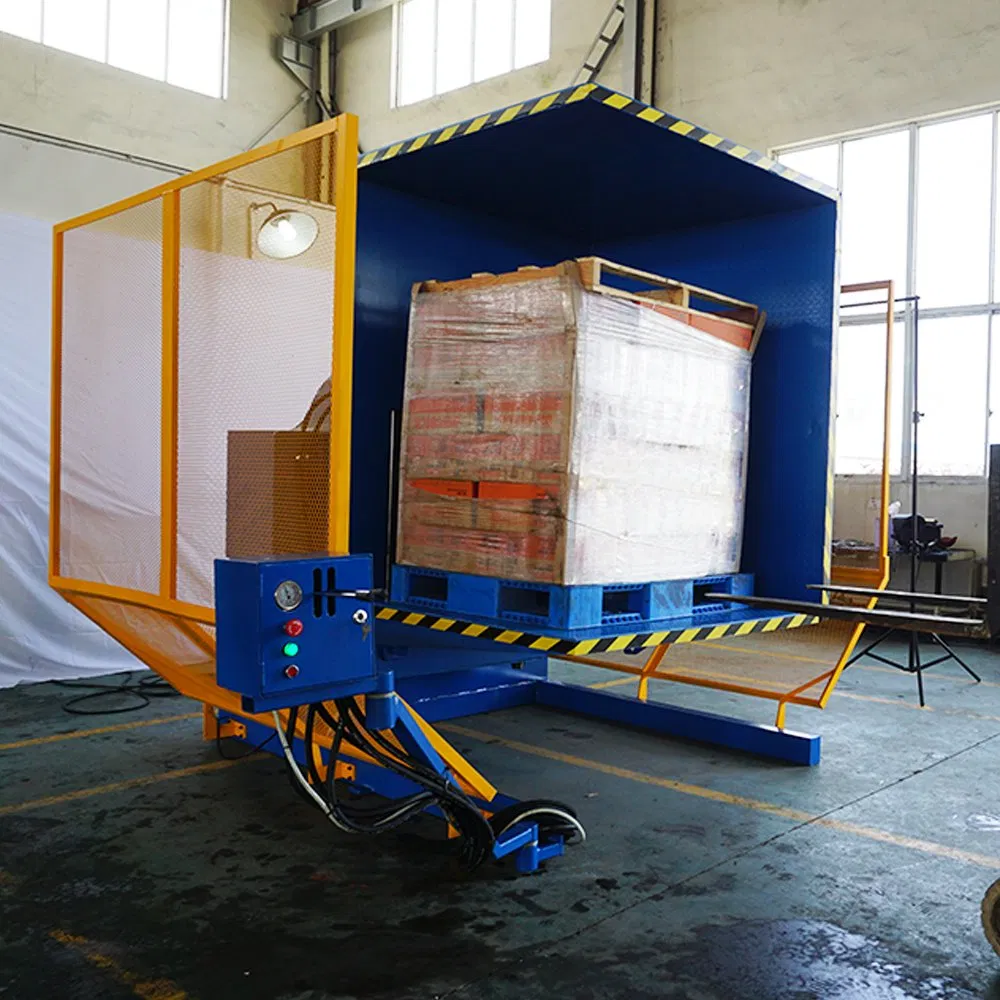
Conclusion
Automated pallet exchange is a key strategic investment. It directly addresses the safety and efficiency challenges of handling unstable loads, especially in demanding coastal environments, delivering a clear and rapid ROI.


